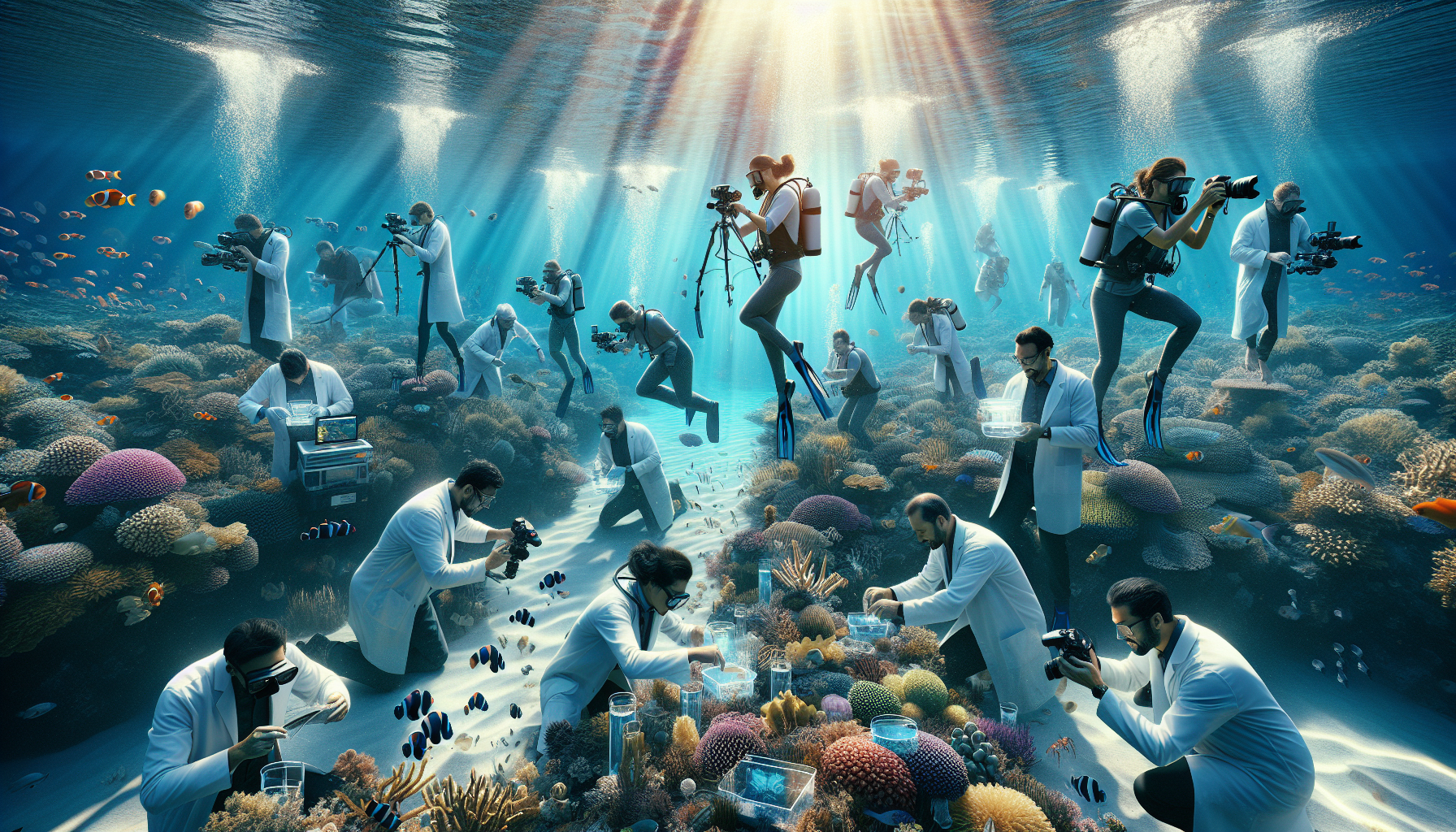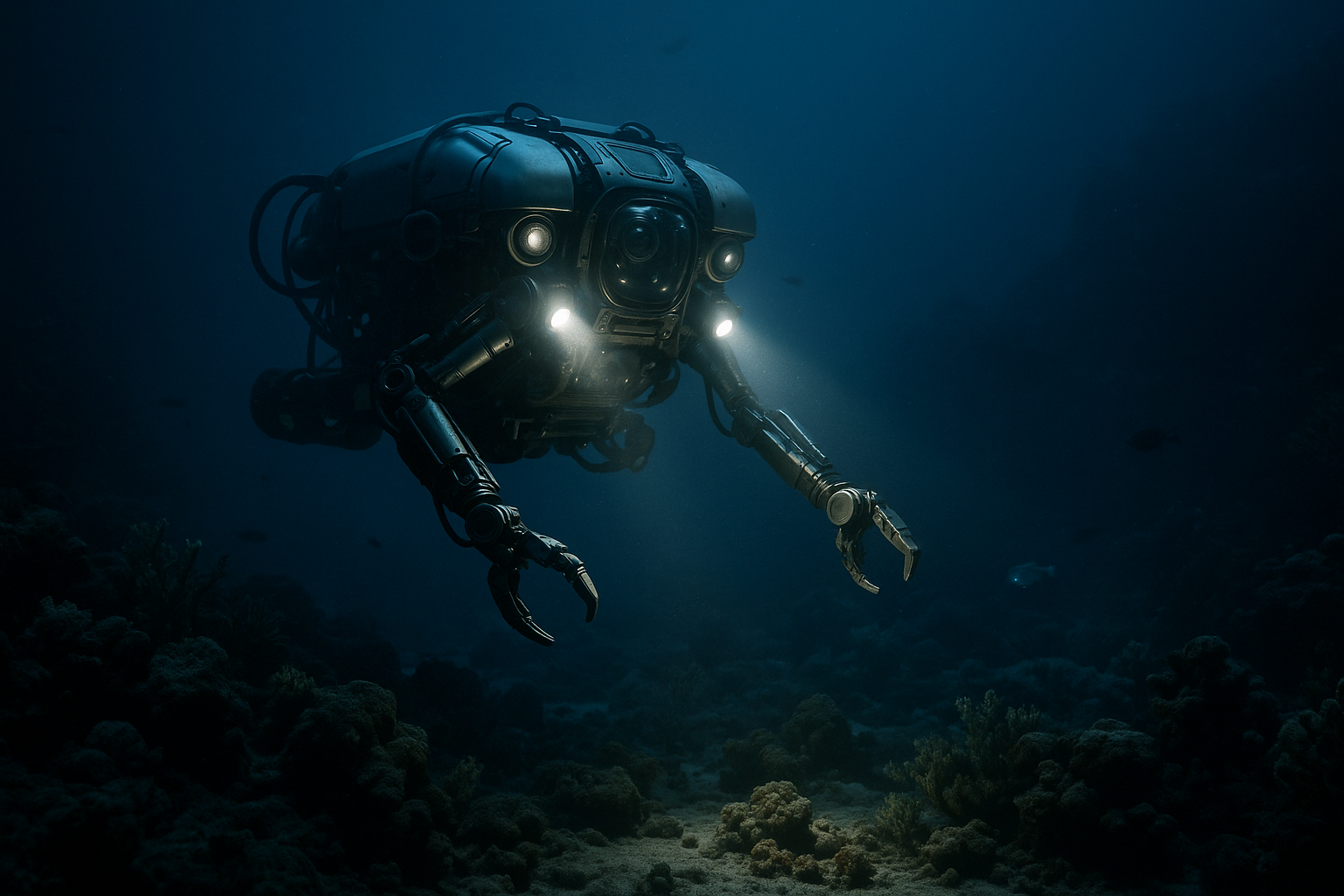In recent years, the realm beneath the ocean’s surface has increasingly captured the imagination and curiosity of scientists, researchers, and explorers alike. The vast, mysterious underwater world holds secrets and insights that could potentially reshape our understanding of life on Earth and even influence the future of our planet. Amidst this burgeoning interest, universities around the globe are stepping up as key players in the field of underwater research, pushing the boundaries of exploration and discovery with innovative studies and cutting-edge technology. Welcome to the exciting world of underwater research, where academia meets adventure, and the quest for knowledge takes a deep dive into the unknown. 🌊
The oceans, covering more than 70% of the Earth’s surface, are a treasure trove of biodiversity, geological phenomena, and untapped resources. Yet, despite their vastness, only a fraction of these waters has been explored, leaving immense potential for groundbreaking discoveries. Universities, with their wealth of intellectual resources and cutting-edge facilities, are uniquely positioned to lead the charge in uncovering the secrets of the deep. Through interdisciplinary collaboration and a commitment to sustainability, these academic institutions are not only contributing to scientific advancement but are also raising awareness about the critical importance of preserving our marine ecosystems for future generations.
In this exploration of universities’ role in underwater research, we will first delve into the innovative technologies and methodologies being developed and utilized to study marine environments. From remotely operated vehicles (ROVs) and autonomous underwater vehicles (AUVs) to advanced sonar mapping and state-of-the-art laboratory facilities, universities are equipping themselves with the tools necessary to navigate and study the ocean depths like never before. These technological advancements are revolutionizing our ability to collect data, monitor changes, and gain insights into the complex and dynamic systems that govern our oceans.
Next, we will examine some of the groundbreaking research initiatives currently being spearheaded by universities. These projects range from studying the impacts of climate change on coral reefs and investigating the mysteries of deep-sea hydrothermal vents to exploring the potential of marine organisms in biotechnology and medicine. By highlighting these diverse and impactful studies, we aim to showcase the breadth and depth of university-led underwater research and its implications for both scientific understanding and practical applications.
Finally, we’ll discuss the vital role of education and outreach in fostering a new generation of ocean stewards. Universities are not only centers of research but also hubs for educating and inspiring students who will become the future leaders in marine science and conservation. By integrating hands-on research opportunities, interdisciplinary curricula, and community engagement into their programs, these institutions are cultivating a culture of curiosity and responsibility toward our planet’s oceans. This commitment to education ensures that the knowledge gained from underwater research today will continue to ripple through future generations, inspiring continued exploration and preservation efforts.
Understanding the Importance of Underwater Research
Underwater research is a fascinating and increasingly critical field of study that holds immense potential for scientific discovery and technological advancement. As global challenges such as climate change, resource depletion, and biodiversity loss become more pressing, the role of universities in exploring the depths of our oceans and other aquatic environments has never been more significant. This section explores the fundamental importance of underwater research and how universities are stepping up to the challenge.
Universities have long been at the forefront of innovation and exploration, and their involvement in underwater research is no exception. By leveraging cutting-edge technologies and fostering interdisciplinary collaborations, academic institutions are able to conduct comprehensive studies that contribute to our understanding of marine ecosystems, geology, and the impacts of human activity on aquatic environments. These research efforts are crucial not only for expanding our scientific knowledge but also for informing policy decisions and promoting sustainable management of oceanic resources.
Moreover, underwater research conducted by universities often leads to the development of new technologies and methodologies that have applications beyond the scientific community. From advanced robotics and remote sensing technologies to innovative data analysis techniques, the tools and knowledge gained through underwater research have the potential to drive innovation across various sectors, including industry, healthcare, and environmental management. As you read further, you’ll discover how universities are making waves in this exciting field and the impact their research is having on a global scale.
Technological Advancements in Underwater Exploration
Technological advancements play a pivotal role in enabling universities to conduct groundbreaking underwater research. The development and deployment of sophisticated instruments and tools allow researchers to explore previously inaccessible areas of the ocean, collect valuable data, and gain insights into complex underwater phenomena. This section delves into some of the most notable technologies being utilized by universities in their underwater research endeavors.
One of the most significant advancements in underwater research technology is the use of Autonomous Underwater Vehicles (AUVs). These robotic systems are capable of navigating and conducting research missions without direct human intervention, making them ideal for exploring deep and hazardous environments. Equipped with sensors and cameras, AUVs can capture high-resolution images and gather critical data on temperature, salinity, and chemical composition, among other parameters. This data is invaluable for understanding the health and dynamics of marine ecosystems.
In addition to AUVs, universities are leveraging remotely operated vehicles (ROVs) to conduct underwater research. Unlike AUVs, ROVs are controlled by operators on the surface, allowing for real-time data collection and interaction with the underwater environment. This technology is particularly useful for tasks that require precision and human oversight, such as sampling marine organisms or deploying scientific instruments. The combination of AUVs and ROVs offers a powerful toolkit for researchers seeking to unlock the mysteries of the ocean.
Another exciting technological development is the use of advanced sonar systems and imaging technologies. High-frequency sonar and multibeam echo sounders allow researchers to map the seafloor with unprecedented accuracy, providing detailed topographic data that is essential for studying geological features and habitat distribution. Additionally, innovations in imaging technology, such as underwater LiDAR and photogrammetry, enable the creation of detailed 3D models of underwater structures, enhancing our understanding of their composition and function. For a deeper dive into these technologies, check out this informative video on YouTube.
University Collaborations and Partnerships
Collaboration is key to the success of underwater research, and universities are increasingly forming partnerships with other academic institutions, governmental organizations, and private sector companies to expand their research capabilities and impact. These collaborations facilitate the sharing of resources, expertise, and data, ultimately leading to more comprehensive and effective research outcomes.
One notable example of such collaboration is the establishment of multi-institutional research consortia. These consortia bring together researchers from different universities to address complex research questions that require diverse skill sets and perspectives. By pooling their resources, these collaborations are able to undertake ambitious research projects that would be challenging for any single institution to accomplish on its own. The resulting synergy often leads to significant breakthroughs and discoveries that advance our understanding of underwater environments.
Partnerships with governmental agencies and non-profit organizations also play a crucial role in university-led underwater research. These collaborations often provide funding and logistical support, enabling universities to conduct extensive fieldwork and long-term monitoring studies. Additionally, partnerships with policy-makers and conservation groups help ensure that research findings are translated into actionable strategies for the sustainable management and protection of aquatic ecosystems.
Challenges and Future Directions in Underwater Research
Despite the remarkable advancements and achievements in underwater research, universities face several challenges that must be addressed to continue making strides in this field. One of the primary challenges is the high cost associated with conducting underwater research. The development and maintenance of sophisticated research equipment, as well as the logistical complexities of conducting fieldwork in remote and often harsh environments, require significant financial investment. As such, securing funding is a constant concern for many research institutions.
Another challenge is the need for interdisciplinary collaboration and knowledge integration. Underwater research encompasses a wide range of scientific disciplines, including marine biology, oceanography, geology, and environmental science. Effective research often requires the integration of knowledge and methodologies from these diverse fields, necessitating collaboration among researchers with different expertise. This interdisciplinary approach is essential for addressing complex research questions and ensuring that research findings are comprehensive and impactful.
Looking to the future, universities are increasingly focusing on the development of sustainable research practices and technologies. This includes the creation of eco-friendly research methodologies that minimize the environmental impact of fieldwork and data collection. Additionally, there is a growing emphasis on the use of data-driven approaches and artificial intelligence to enhance research efficiency and data analysis capabilities. By leveraging these technologies, universities can continue to push the boundaries of underwater research and make meaningful contributions to our understanding of the world’s oceans.
Table: Key Technologies in Underwater Research
TechnologyDescriptionApplicationsAutonomous Underwater Vehicles (AUVs)Robotic systems capable of independent navigation and data collection.Deep-sea exploration, environmental monitoring, data collection.Remotely Operated Vehicles (ROVs)Remote-controlled vehicles for real-time data collection and interaction.Sampling, instrument deployment, precision tasks.Sonar SystemsSound-based systems for mapping and imaging the seafloor.Geological studies, habitat mapping, resource exploration.Underwater Imaging TechnologiesTechniques for capturing detailed images and 3D models underwater.Structural analysis, biodiversity studies, archaeological exploration.
- Explore the potential of underwater research in addressing global challenges.
- Learn how universities are pioneering technological advancements in marine exploration.
- Discover the importance of interdisciplinary collaborations and partnerships.
- Understand the challenges and future directions of underwater research.
For a more visual exploration of how universities are innovating in underwater research, we encourage you to watch this insightful video from a renowned channel on marine exploration. 📹

Conclusion
As we bring our exploration of “Diving into Discovery: How Universities are Making Waves in Underwater Research” to a close, it’s crucial to reflect on the remarkable insights and advancements discussed throughout the article. From technological innovations to groundbreaking discoveries, universities worldwide are spearheading a new era of underwater research, opening a world of possibilities beneath the waves.
One of the key points highlighted is the technological revolution in underwater exploration. With the advent of sophisticated submersibles, remotely operated vehicles (ROVs), and autonomous underwater vehicles (AUVs), researchers can now access the ocean’s depths like never before. These technologies not only allow for detailed mapping of the ocean floor but also enable the study of marine life in its natural habitat, leading to significant breakthroughs in our understanding of marine ecosystems.
Moreover, the article underscores the collaborative efforts between universities, governments, and private organizations. These partnerships are vital in pooling resources and expertise, thus accelerating the pace of discovery. Such collaborations also facilitate the sharing of knowledge, ensuring that findings contribute to global efforts in ocean conservation and sustainable management of marine resources.
Universities also play a pivotal role in education and training, preparing the next generation of marine scientists and researchers. Through hands-on fieldwork, students gain invaluable experience, cultivating a deeper appreciation for the ocean’s complexities and the need for its preservation. This educational aspect is crucial, as it fosters a community of informed and passionate individuals dedicated to the stewardship of our oceans.
The importance of underwater research cannot be overstated. As climate change continues to impact marine environments, understanding these changes is imperative for developing effective conservation strategies. Research conducted by universities provides critical data that informs policy decisions, helping to safeguard marine biodiversity and the livelihoods dependent on it.
In light of these points, it’s clear that underwater research conducted by universities is making significant contributions to science and society. The work being done is not only expanding our knowledge but also inspiring action towards more sustainable interactions with our planet’s oceans.
As we conclude, I encourage you, the reader, to reflect on the insights shared in this article. Consider how you can contribute to or support this vital field, whether through academic pursuits, advocacy, or spreading awareness. Share this knowledge with others, sparking conversations that lead to meaningful change. 🌊
For further reading and to stay updated on the latest in underwater research, consider exploring these resources:
– Woods Hole Oceanographic Institution
– Scripps Institution of Oceanography
– National Oceanic and Atmospheric Administration (NOAA)
Thank you for joining us on this journey beneath the waves. Together, we can make a difference, ensuring that our oceans continue to thrive for generations to come. 🌍
Gabriel is a visual storyteller and archival artist whose lens dives deep into the submerged echoes of underwater archaeology. Through sediment and salt, Gabriel traces forgotten histories — those whispered by shipwrecks, eroded artifacts, and drowned cities.
Compelled by the allure of ancient trade routes, submerged sanctuaries, and the ocean’s quiet possession of the past, Gabriel’s work charts a poetic cartography of the sea’s memory. From coral-laced amphorae to oxidized anchors, every object he illuminates becomes part of a narrative where time collapses and the past drifts close.
His creations are more than documentation — they are visual meditations on absence and endurance. Gabriel blends design, historical research, and storytelling to surface the quiet resilience of maritime remnants. He captures the textures of time: rust that blooms like algae, stone that crumbles into myth, and silence that speaks louder than ruin.
Through curated imagery, thoughtful essays, and reconstructed impressions of what lies beneath, Gabriel invites viewers to see underwater ruins not as remnants, but as thresholds to wonder — places where memory is refracted through water, and where myth lingers like salt on stone.
His practice is a tribute to:
The unknowable depths of civilizations consumed by tides
The fragile endurance of objects left behind
The enduring dialogue between water, stone, and remembrance
If your soul drifts toward the relics of lost maritime empires, the mythic pull of coastal rituals, or the ghostly grace of sunken vessels, Gabriel welcomes you to descend into a space where history sleeps in sediment — but dreams in currents.




